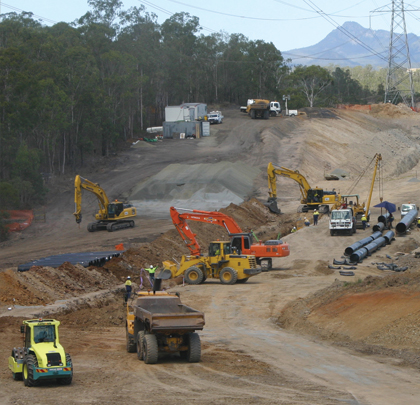Technology has advanced the means of production and how construction businesses are run. Such technology provides valuable real-time information, which allows for better decisions to be made. Access to this information benefits the construction contractor in all areas from the heavy-equipment operator to the site superintendent to the business owner. Here is where the capabilities are found to democratically distribute large amounts of data that can be filtered and selectively used by individuals in their jobs to be more effective, productive, and accountable.
The concept of telematics has become a catchall for much of the information-based developments and systems being seen in the marketplace. However, there is a flaw in the current evolution of the telematics diagnostics picture: The tremendous amount of data and benefits are there if the engine is running, but what happens when the machine has stopped?
THE TELEMATICS SOLUTION
Intelligent Telematics, or IntelliMaticsTM, solves that problem. The new cutting edge development has the ability to show why the engine will not start and/or why other production systems on the machine have stopped working, such as why the upper conveyor won’t operate on a milling machine or why the screed won’t move on a paver.
“We’ve taken the next logical step with telematics and created IntelliMatics, which can diagnose why a machine’s engine or other system has stopped working,” states Kyle Grathwol, president and chief technologist with Grathwol Automation. “Telematics can tell the contractor that the engine has stopped, where IntelliMatics tells why.”
In addition to the benefits acquired through traditional telematics systems, this new technology will show why an engine or other system has stopped functioning; provide a visual guide so the machine operator, technician, or machine owner can see where the voltage path stops in the circuit under test; and create customized fault codes for the machine, not just the engine.
Two manufacturers installing IntelliMatics on their equipment now are Guntert and Zimmerman on their slipform pavers and Roadtec on their milling machines and pavers.
“The IntelliMatics solution from Grathwol Automation is the perfect interface to our control systems for OEMs and customers alike,” states Frank Flores, president of Flores Automation. “This technology is a revolutionary step in system diagnostics and will make the common service trip a thing of the past.”
In short, telematics is any integrated use of telecommunications and ICT-information and communications technology, including GPS. It is the sending, receiving, and storing of information via telecommunication devices. Typically, this is in conjunction with machine or device control.
Even though the mere transmission of data can be remarkable, it is the application of the information that is truly impressive. The software utilizes the information gathered to control production, monitor progress, alert to any problems, and help manage the machine, the project, and the business.
Telematics currently offers contractors the ability to monitor precisely where their fleet of equipment is currently located, which machines are running, and the level of productivity being achieved. With GPS and 3D digital site models, machines can grade, compact, mill, and pave within astounding accuracies. Machines can “tell” owners when it’s time for scheduled maintenance and even diagnose the cause of mechanical and hydraulic issues.
It’s in this capacity of diagnostic software where cutting-edge developments are occurring. These advances are not limited to new machines; remote diagnostics can now be installed on older pieces of equipment.
“Our objective is to address a contractor’s toughest, reoccurring problems and help solve them; so we have developed custom IntelliMatics systems for older pieces of heavy equipment that extend their useful lives and make them smarter,” states Kyle Grathwol, president and chief technologist with Grathwol Automation. “There are no specific machine system requirements for installing IntelliMatics on older equipment. Optimally, we prefer a machine with an engine using the J1939 protocol, but IntelliMatics can be installed on any piece of equipment.”
With the advancement of telematics, contractors are experiencing the real-world benefits of breakthrough software development. Fleet management can help track assets and save time when a need emerges for a piece of heavy equipment that may be sitting idle on the other side of a jobsite or at another different location. Engine diagnostics can prevent costly workflow slowdowns or stoppages. A machine that’s dead on the site can not only impair the workflow, but also endanger a contractor’s timetable. Missing a deadline can incur penalties and affect the contractor’s ability to move quickly to other jobs and opportunities.
The engine diagnostics feature of telematics has certainly helped contractors meet the demands of today’s expectations for shorter completion deadlines and slimmer margins. There is little room for errors in today’s construction business. ■
About the Author:
Jeff Winke is a business and construction writer based in Milwaukee, Wisconsin. He can be reached through www.jeffwinke.com.
_________________________________________________________________________
Modern Contractor Solutions, January 2014
Did you enjoy this article?
Subscribe to the FREE Digital Edition of Modern Contractor Solutions magazine.

Cutting-Edge Developments in the Construction Market


